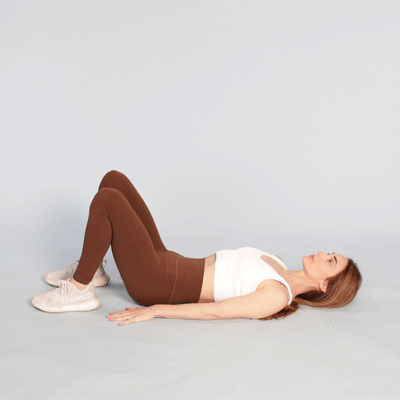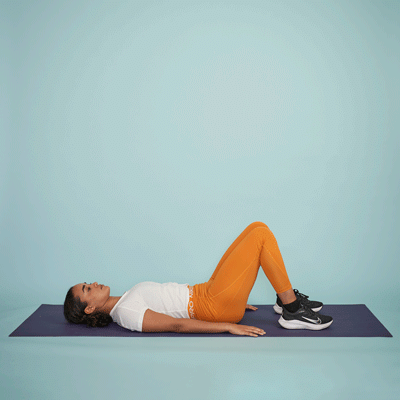Certain exercises can help strengthen the muscles that support the lower back to reduce pain and prevent injury. These movements could be done with or without added weight.
Weak muscles, especially those in your core and pelvis, can sometimes lead to back pain or injury.
Low back pain can interfere with your daily activities.
However, research has shown that strengthening exercises could help treat lower back pain.
Keep reading to learn more about 5 equipment-free exercises for your lower back and what causes lower back pain.
Listen to your body
Exercise could help you manage and prevent lower back pain but it’s important not to push it too far.
If you feel pain during an exercise, stop doing the movement.
Only work within your physical limits to prevent further injury. Doing too much too fast can increase back pain and slow the healing process.
Always speak with a doctor before beginning a new exercise program, especially if you experienced a traumatic injury. They could help develop an exercise regime that’s right for you.
The gluteus maximus is the large muscle of the buttocks. It’s one of the strongest muscles in the body. It’s responsible for movement at the hip, including hip extension activities like squats.
Weakness in the gluteal muscles may
Muscles worked: gluteus maximus
- Lie on the ground with your feet flat on the floor, hip-width apart.
- With your hands by your sides, press your feet into the floor as you slowly lift your buttocks off the ground until your body is in a straight line. Keep your shoulders on the floor. Hold for 10 to 15 seconds.
- Lower down.
- Repeat 15 times.
- Perform 3 sets. Rest for 1 minute between each set.
The transverse abdominis is the muscle that wraps around the midline. It helps support the spine and abdomen.
It’s important for
Muscles worked: transverse abdominis
- Lie on the ground with your feet flat on the floor, hip-width apart.
- Relax your hands by your sides.
- Take a deep inhale. Breathe out and pull your belly button in toward your spine, engaging your abdominal muscles without tilting your hips.
- Hold for 5 seconds.
- Repeat 5 times.
The hip abductor muscles help to raise your leg to the side, away from your body. They also help support your pelvis when you’re standing on one leg.
When these muscles are weak, they can affect balance and mobility and
Muscles worked: gluteus medius
- Lie on one side, keeping your lower leg slightly bent on the ground.
- Engage your core by drawing your belly button in toward your spine.
- Raise your top leg without moving the rest of your body.
- Hold for 2 seconds at the top. Repeat 10 times.
- Repeat on the other side. Perform 3 sets on each side.
Your back extensors run along your spine. They help you maintain an upright position, support your spine and pelvic bones, and allow you to arch your back.
If this exercise makes your back pain worse, stop doing it. A healthcare professional may need to rule out more serious causes of your back pain.
Muscles worked: back, buttocks and hips, shoulders
- Lie on your stomach with your arms extended out in front of you and your legs long.
- Lift your hands and feet off the ground approximately 6 inches, or until you feel a contraction in your lower back.
- Engage your core muscles by slightly lifting your belly button off the floor. Reach away with your hands and feet. Be sure to look at the floor during this exercise to avoid neck strain.
- Hold for 2 seconds.
- Return to starting position. Repeat 10 times.
The abdominal muscles play a significant role in supporting the spine. Strong abdominal muscles can help maintain proper hip alignment. This can contribute to overall core strength and stability.
Muscles worked: rectus abdominus, transverse abdominis
- Lie on the ground with your feet flat on the floor, keeping your knees bent.
- Cross your hands over your chest.
- Take a deep breath. While you exhale, brace your abdominals by pulling your belly button in toward your spine.
- Slowly lift your shoulders off the ground a few inches. Try keeping your neck in line with your spine instead of rounding to avoid pulling up with your neck.
- Return to starting position.
- Repeat 10 times. Perform 3 sets.
In the United States, low back pain is one of the
Some causes for lower back pain may include:
How can I make my lower back stronger?
Some exercises that target your core muscles, glutes, and lower back could help strengthen your lower back. These may include partial abdominal crunches, bridges, and supermans.
How do you heal a weak lower back?
Treatment for a weak or injured lower back will depend on several factors, such as the cause and severity of your symptoms. Your treatment plan may include a combination of exercises, physical therapy, medications, and surgery.
What is the best exercise for lower back pain?
There’s no singular best exercise for lower back pain. An exercise regime that targets your core, glutes, and back could help you manage and prevent lower back pain.
Lower back strengthening exercises are an excellent way to prevent recurring lower back pain.
Stronger core muscles help increase stability, decrease your chances of getting injured, and improve function.
Modifying daily activities like squatting down to pick up items can also help prevent lower back pain or muscle spasms.








